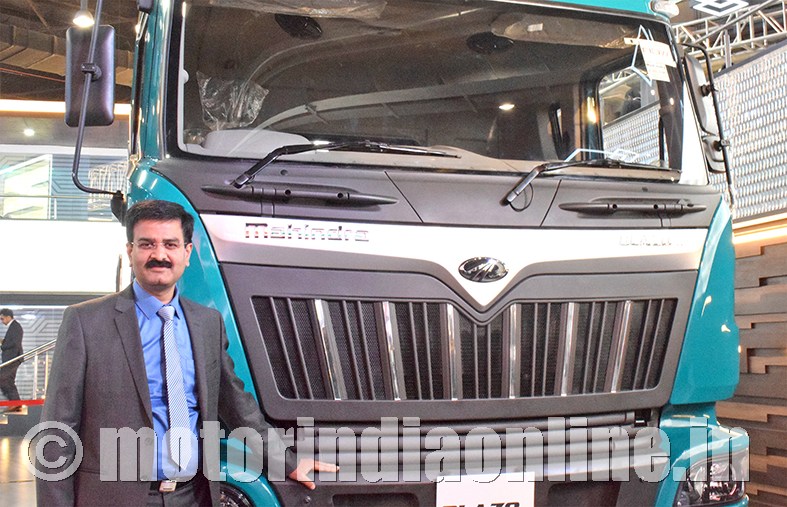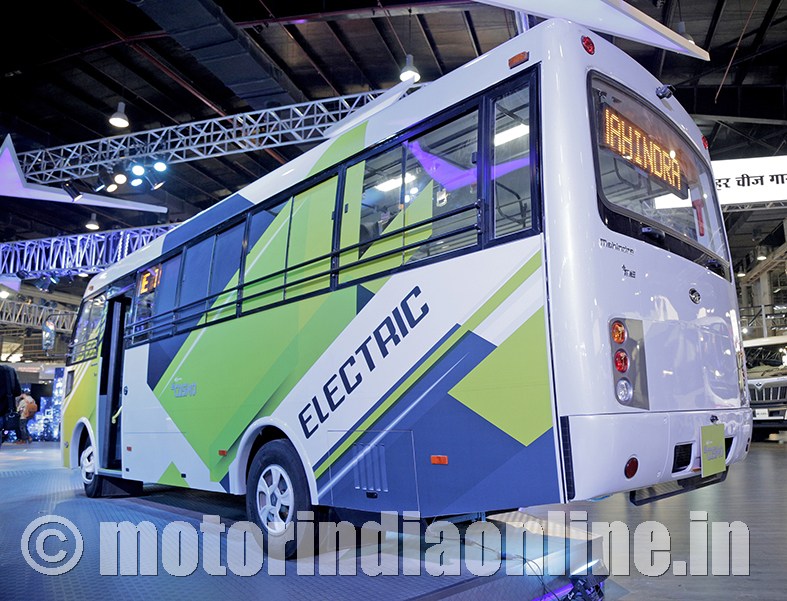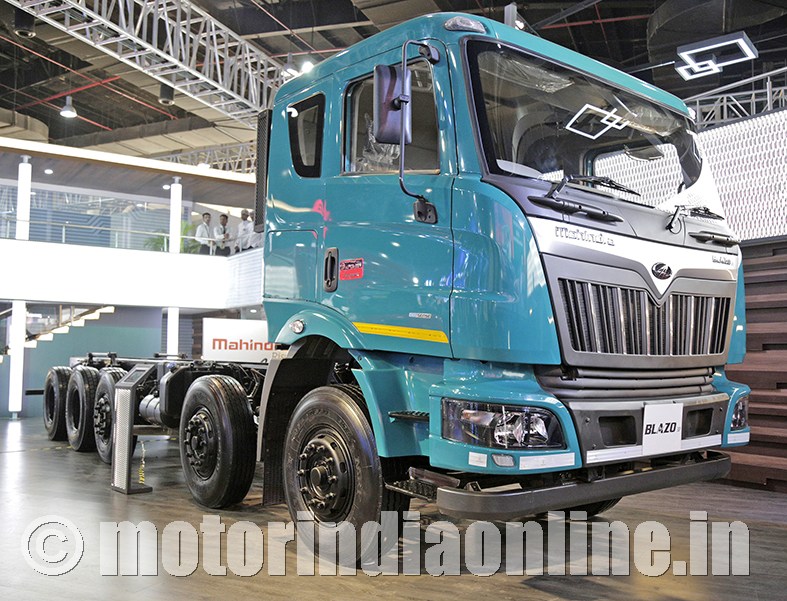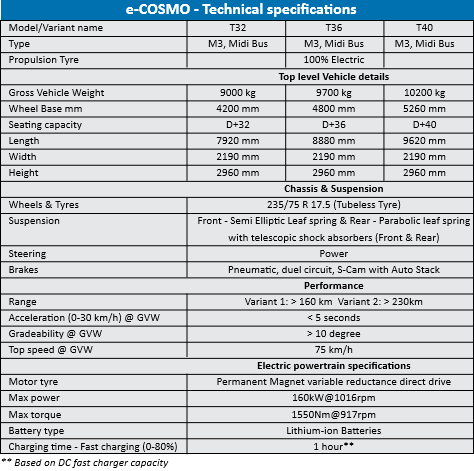As part of its ‘Future of Mobility’ theme at this year’s Expo, Mahindra presented its first electric bus, the e-COSMO, along with a number of other electric vehicles, leading the way in the country’s electro-mobility charge. At the heart of the e-COSMO from Mahindra Trucks & Buses Ltd. (MTBL) is the efficient ‘state-of-the-art’ direct drive motor developed in partnership with TM4, Canada, one of the most renowned players in the global EV eco system. This zero-emission bus has a highly reliable electric power train system, battery packaging with a sophisticated battery management system (BMS), regenerative braking system and many more custom-made solutions.

The electric bus is designed in such a way that it provides utmost comfort to the driver and passengers and also ensures less cost of ownership. Mahindra electric buses offer a variety of seating options in various configurations, ensuring maximum usage.
We spoke to Mr. Vinod Sahay, CEO, MTBL, on the sidelines of the launch and gathered his views on the company’s way forward in the electric space.
What went behind bringing the COSMO bus in an electric format, amongst the first set of e-CVs for mass mobility movement from the Mahindra stable?
It went with our group’s philosophy of going electric, as we had spotted this trend much before others could and thought that it (electric mobility) cannot be limited to passenger cars. Cosmo electric hence becomes the first electric product for us as far as the buses are concerned. By and large, the body is largely the same with some changes to front facia, but the bigger change is in the drive line. It is a direct drive product. The product is already under testing and validation, based on all the tenders are coming. We will be ready for commercial sales in a couple of quarters from now. We are also speaking to private fleet operators, apart from the STUs, for introduction on a pilot project basis. For electric movement to catch up it also has to be backed by the private players in both staff and school transportation.
What are the factors shaping the demand for electric vehicles in India?
There are invariably three changes that I see with the electric movement in the country. One is of course the technology development. Second is the adoption and infrastructure set-up and third is the commercial viability and gains as electric CVs will be used as a commercial product. So today as far as the technology is concerned, the entire industry is on one platform and doesn’t feel anymore that the electric product is a compromised product, or can’t run on high speed, can’t carry loads, etc. All that is behind us now. Even this bus in our internal trials has proven to be better than the diesel version. Right now, it is with fixed battery systems and can go to swap batteries if required. However, the bigger concerns on swap batteries is that there is no standardization. If my swappable batteries don’t work with some other OEMs’ swappable batteries, then it is of no use. It will work if all the dimensions on the batteries are same. Tomorrow if, hypothetically, IOCL or HP pump has to sell or rent swappable batteries, they can’t keep different brands as per the OEMs.
Do you feel the competition is catching up since most of the OEMs, as you mentioned, have discarded the skepticism over electric drive train?
I believe we are on an equal footing as far as the technology is concerned. However, we have not been a full range player in buses so far even in Diesel. When we go electric, we may still have variants to offer in diesel. We are working on a new bus platform which will come up to 10 metres and with an LPO version with a completely new platform and not the current LCV platform which is an older generation.
Although the electric is being accepted, all commercial vehicles will not be converting to electric, especially the long-haul trucks. So, as I said, challenges are many, but the early adopters will be the intra-city segments like city buses, LCVs and SCVs.
Is Mahindra playing any role in guiding STUs or private operators to build charging infrastructures?
Currently, STUs are looking at a model where OEMs tie up with a particular operator and they tie up with somebody who provides charging infrastructure. We are speaking to a couple of people. They are looking at OEMs to provide them the entire eco-system. The good thing is that within the city operation, if one charge is able to provide 150 km, then charging set-up is required only at the depots.
It’s like a chicken & egg problem, isn’t it? Whether the infrastructure should come first or the vehicles?
Already the vehicles are being manufactured, but then the Government or somebody has to think about the infrastructure. Everything can’t be provided by an OEM. It is like expecting OEMs to supply BS-VI fuel to the entire nation. However, we are still not denying partnering with STUs in supporting them with charging infrastructure at their depots. If it really turns out well, may be one of Mahindra subsidiaries might think of getting in the business. But that’s not every OEM’s primary business is.


